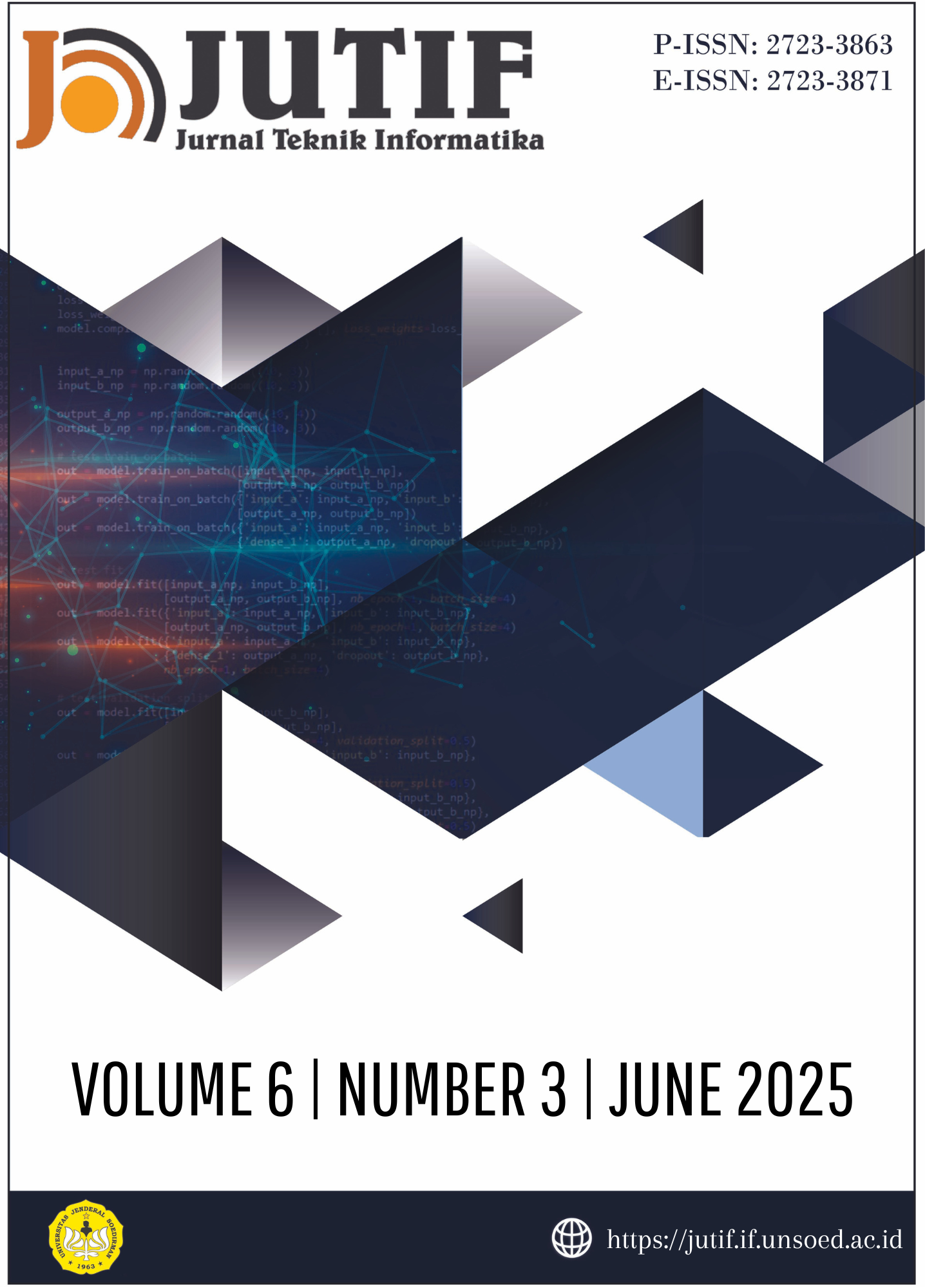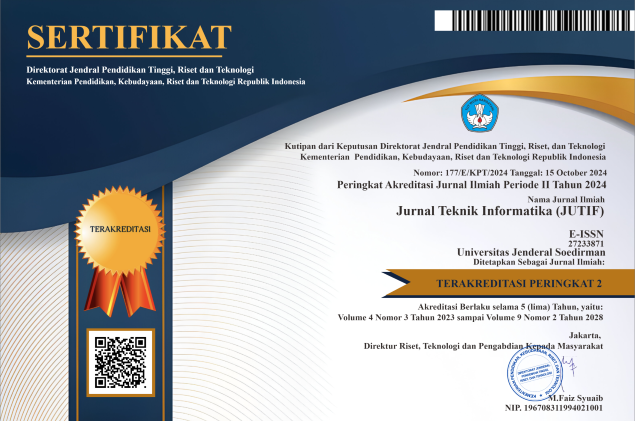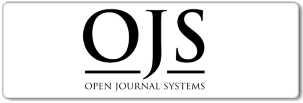Identifying Academic Excellence: Fuzzy Subtractive Clustering of Student Learning Outcomes
DOI:
https://doi.org/10.52436/1.jutif.2025.6.3.4614Keywords:
Cluster, Fuzzy Subtractive Clustering, StudentsAbstract
Education forms a vital foundation for a nation's future. In this digital era, while the use of Information and Communication Technology (ICT) in education is increasing, it brings increasingly complex challenges in education data management and analysis. The growing number of students each year results in a large volume of data, which would be difficult to manage if still relying on manual methods. Manual approaches are inefficient, time-consuming, prone to inconsistencies and human error, especially when identifying outstanding students in large and complex data. This research aims to implement a clustering system to group outstanding students at XYZ elementary school using the Fuzzy Subtractive Clustering (FSC) method. FSC was chosen for its ability to identify data groups based on the density of data points. FSC involves several important parameters, including radius, squash factor, acceptance ratio, and rejection ratio. Added variabel of social and spiritual values aims to enhance grouping quality by offering a broader perspective on students' character, attitudes, and social interactions. Parameter exploration shows an increase in the silhouette score from 0.20–0.45 to 0.45-0.57 and variable addition spiritual and social values, which indicates clearer cluster separation and provides better insights. The best parameters results were achieved with radius 0.3, accept ratio 0.5, reject ratio 0.04, and squash factor 1.25, resulting in a Silhouette Score of 0.57 and forming 5 student groups. Cluster results can guide special mentoring for students with low academic, spiritual, and social values, and support personalized learning programs based on each cluster’s characteristics.
Downloads
References
Asmana, Y. A. Wijaya, and Martanti, “CLUSTERING DATA CALON SISWA BARU MENGGUNAKAN METODE K-MEANS DI SEKOLAH MENENGAH KEJURUAN WAHIDIN KOTA CIREBON,” JATI(Jurnal Mahasiswa Teknik Informatika), vol. 6, no. 2, pp. 552–559, Sep. 2022, doi: https://doi.org/10.36040/jati.v6i2.5236.
H. Rahmawati, P. Pujiastuti, and A. P. Cahyaningtyas, “Kategorisasi Kemampuan Berpikir Kritis Siswa Kelas Empat Sekolah Dasar di SD se-Gugus II Kapanewon Playen, Gunung Kidul,” Jurnal Pendidikan dan Kebudayaan, vol. 8, no. 1, pp. 88–104, Jun. 2023, doi: https://doi.org/10.24832/jpnk.v8i1.3338.
S. Athoillah, M. Y. Abu Bakar, and N. Kholis, “Inovasi Penilaian Hasil Belajar Model POT di Era Merdeka Belajar,” TA’DIBUNA: Jurnal Pendidikan Agama Islam, vol. 7, no. 1, pp. 39–51, Jul. 2024, doi: http://dx.doi.org/10.30659/jpai.7.1.39-51.
Siti Asiyah and Novebri, “Manajemen Peserta Didik dalam Meningkatkan Prestasi Akademik dan Non Akademik Siswa SMPN 1 Lembah Sorik Marapi,” Hikmah : Jurnal Studi Pendidikan Agama Islam, vol. 1, no. 4, pp. 213–224, Dec. 2024, doi: https://doi.org/10.61132/hikmah.v1i4.329.
M. Alenezi, S. Wardat, and M. Akour, “The Need of Integrating Digital Education in Higher Education: Challenges and Opportunities,” Sustainability (Switzerland), vol. 15, no. 6, p. 4782, Mar. 2023, doi: https://doi.org/10.3390/su15064782.
A. Haleem, M. Javaid, M. A. Qadri, and R. Suman, “Understanding the role of digital technologies in education: A review,” Sustainable Operations and Computers, vol. 3, pp. 275–285, Jan. 2022, doi: https://doi.org/10.1016/j.susoc.2022.05.004.
Kementerian Pendidikan Dasar dan Menengah, “Data Pokok Peserta Didik,” Data Pokok Pendidikan (DAPODIK). Accessed: Apr. 08, 2025. [Online]. Available: https://dapo.dikdasmen.go.id/sp
R. A. Ariyaluran Habeeb et al., “Clustering-based real-time anomaly detection—A breakthrough in big data technologies,” Transactions on Emerging Telecommunications Technologies, vol. 33, no. 8, Aug. 2022, doi: https://doi.org/10.1002/ett.3647.
A. L. Maukar, F. Marisa, A. A. Widodo, N. Kamilaningtyas, D. Novian, and D. Nugraha, “ANALISIS DATA PENERIMAAN MAHASISWA BARU BERBASIS K-MEANS,” JIKO (Jurnal Informatika dan Komputer), vol. 6, no. 2, pp. 142–147, Sep. 2022, doi: http://dx.doi.org/10.26798/jiko.v6i2.558.
M. Yağcı, “Educational data mining: prediction of students’ academic performance using machine learning algorithms,” Smart Learning Environments, vol. 9, no. 1, Dec. 2022, doi: https://doi.org/10.1186/s40561-022-00192-z.
A. Pasaribu, D. Prasetya Kristiadi, and C. Lea Taryono, “PENGEMBANGAN SISTEM PENILAIAN SISWA DENGAN MODEL RAPID APPLICATION DEVELOPMENT PADA SMP WAHANA HARAPAN,” Jurnal Sistem Informasi dan Teknologi (SINTEK), vol. 3, no. 1, pp. 9–13, 2023, doi: https://doi.org/10.56995/sintek.v3i1.50.
Y. M. Gultom, F. Syahputra, and S. Syahrial, “Pengaruh Evaluasi Pembelajaran terhadap Kualitas Pembelajaran Guru di Sekolah Dasar,” Jurnal Pendidikan Guru Sekolah Dasar, vol. 1, no. 3, pp. 1–8, May 2024, doi: https://doi.org/10.47134/pgsd.v1i3.543.
M. Hilman, A. Rinaldi Dikananda, and A. Rifai, “K-Means Algorithm for Clustering High-Achieving Student at Madrasah Tsanawiyah Yami Waled,” Journal of Artificial Intelligence and Engineering Applications, vol. 4, no. 3, pp. 1538–1548, Jun. 2025, doi: https://doi.org/10.59934/jaiea.v4i3.771.
T. Andayani and F. Madani, “Peran Penilaian Pembelajaran Dalam Meningkatkan Prestasi Siswa di Pendidikan Dasar,” Jurnal Educatio FKIP UNMA, vol. 9, no. 2, pp. 924–930, Jun. 2023, doi: https://doi.org/10.31949/educatio.v9i2.4402.
V. Valentine et al., “Penerapan Kurva Normal dalam Analisis Nilai Ujian Akhir Siswa Propinsi Kalimantan Tengah,” Informatech: Jurnal Ilmiah Informatika dan Komputer, vol. 1, no. 2, pp. 157–162, 2024, doi: https://doi.org/10.69533/y4f5rd94.
M. Qusyairi, Zul Hidayatullah, and Arnila Sandi, “Penerapan K-Means Clustering Dalam Pengelompokan Prestasi Siswa Dengan Optimasi Metode Elbow,” Infotek: Jurnal Informatika dan Teknologi, vol. 7, no. 2, pp. 500–510, Jul. 2024, doi: https://doi.org/10.29408/jit.v7i2.26375.
E. A. Saputra and Y. Nataliani, “Analisis Pengelompokan Data Nilai Siswa untuk Menentukan Siswa Berprestasi Menggunakan Metode Clustering K-Means,” Journal of Information Systems and Informatics, vol. 3, no. 3, Sep. 2021, doi: https://doi.org/10.51519/journalisi.v3i3.164.
A. Yudhistira and R. Andika, “Pengelompokan Data Nilai Siswa Menggunakan Metode K-Means Clustering,” Journal of Artificial Intelligence and Technology Information (JAITI), vol. 1, no. 1, pp. 20–28, Mar. 2023, doi: https://doi.org/10.58602/jaiti.v1i1.22.
M. S. Hasibuan, A. H. Lubis, and M. N. Sari, “Perbandingan algoritma clustering dbscan dan k-means dalam pengelompokan siswa terbaik,” INFOTECH : Jurnal Informatika & Teknologi, vol. 5, no. 2, pp. 301–309, Dec. 2024, doi: https://doi.org/10.37373/infotech.v5i2.1457.
A. E. Haryati and S. Surono, “COMPARATIVE STUDY OF DISTANCE MEASURES ON FUZZY SUBTRACTIVE CLUSTERING,” MEDIA STATISTIKA, vol. 14, no. 2, pp. 137–145, Jan. 2022, doi: https://doi.org/10.14710/medstat.14.2.137-145.
A. Eka Haryati, S. Surono, T. Tanu Wijaya, G. Khang Wen, and A. Thobirin, “Fuzzy subtractive clustering (FSC) with exponential membership function for heart failure disease clustering,” International Journal Of Artificial Intelegence Research, vol. 6, no. 1, Jun. 2022, Accessed: Jun. 24, 2025. [Online]. Available: https://ijair.id/index.php/ijair/article/view/306
S. Kusumadewi, L. Rosita, and E. G. Wahyuni, “Performance of Fuzzy C-Means (FCM) and Fuzzy Subtractive Clustering (FSC) on Medical Data Imputation,” ComTech: Computer, Mathematics and Engineering Applications, vol. 15, no. 1, pp. 29–40, May 2024, doi: https://doi.org/10.21512/comtech.v15i1.11002.
K. P. Sinaga and M. S. Yang, “Unsupervised K-means clustering algorithm,” IEEE Access, vol. 8, pp. 80716–80727, 2020, doi: https://doi.org/10.1109/ACCESS.2020.2988796.
A. E. Haryati and Sugiyarto, “Clustering with Principal Component Analysis and Fuzzy Subtractive Clustering Using Membership Function Exponential and Hamming Distance,” IOP Conf Ser Mater Sci Eng, vol. 1077, no. 1, p. 012019, Feb. 2021, doi: 10.1088/1757-899x/1077/1/012019.
L. Rosita, S. Kusumadewi, T. Ratnaningsih, N. Kertia, B. D. Purwanto, and E. G. Wahyuni, “Ferritin Level Prediction in Patients with Chronic Kidney Disease using Cluster Centers on Fuzzy Subtractive Clustering,” International Journal of Computing and Digital Systems, vol. 16, no. 1, pp. 403–418, Jul. 2024, doi: http://dx.doi.org/10.12785/ijcds/160132.
M. Idhom, D. A. Prasetya, P. A. Riyantoko, T. M. Fahrudin, and A. P. Sari, “Pneumonia Classification Utilizing VGG-16 Architecture and Convolutional Neural Network Algorithm for Imbalanced Datasets,” TIERS Information Technology Journal, vol. 4, no. 1, pp. 73–82, Jun. 2023, doi: https://doi.org/10.38043/tiers.v4i1.4380.
B. Hakim, “Analisa Sentimen Data Text Preprocessing Pada Data Mining Dengan Menggunakan Machine Learning,” JBASE - Journal of Business and Audit Information Systems, vol. 4, no. 2, Aug. 2021, doi: http://dx.doi.org/10.30813/jbase.v4i2.3000.
P. A. Riyantoko, K. M. Hindrayani, T. M. Fahrudin, and M. Idhom, “Exploratory Data Analysis and Machine Learning Algorithms to Classifying Stroke Disease,” Network Security and Information System (IJCONSIST), vol. 2, no. 2, pp. 77–82, 2021, doi: https://doi.org/10.33005/ijconsist.v2i02.49.
I. N. Simbolon and P. D. Friskila, “ANALISIS DAN EVALUASI ALGORITMA DBSCAN (DENSITY-BASED SPATIAL CLUSTERING OF APPLICATIONS WITH NOISE) PADA TUBERKULOSIS,” Jurnal Informatika dan Teknik Elektro Terapan, vol. 12, no. 3S1, Oct. 2024, doi: https://doi.org/10.23960/jitet.v12i3S1.5206.
M. K. Dahouda and I. Joe, “A Deep-Learned Embedding Technique for Categorical Features Encoding,” IEEE Access, vol. 9, pp. 114381–114391, Aug. 2021, doi: https://doi.org/10.1109/ACCESS.2021.3104357.
R. D. Christyanti, D. Sulaiman, A. P. Utomo, and M. Ayyub, “Clustering Wilayah Kerawanan Stunting Menggunakan Metode Fuzzy Subtractive Clustering,” Jurnal Ilmiah Teknologi Informasi Asia, vol. 17, no. 1, pp. 1–8, Oct. 2023, doi: https://doi.org/10.32815/jitika.v17i1.877.
S. Kusumadewi and H. Purnomo, APLIKASI LOGIKA FUZZY Untuk Pendukung Keputusan, 2nd ed. Yogyakarta: Graha Ilmu, 2013.
D. Arman Prasetya, A. P. Sari, M. Idhom, and A. Lisanthoni, “Optimizing Clustering Analysis to Identify High-Potential Markets for Indonesian Tuber Exports,” Indonesian Journal of Electronics, Electromedical Engineering, and Medical Informatics, vol. 7, no. 1, pp. 113–122, Feb. 2025, doi: https://doi.org/10.35882/skzqbd57.
N. Azizah, D. Yuniarti, and R. Goejantoro, “Penerapan Metode Fuzzy Subtractive Clustering (Studi Kasus: PengelompokkanKecamatan di Provinsi Kalimantan Timur Berdasarkan Luas Daerah dan Jumlah Penduduk Tahun 2015),” Jurnal EKSPONENSIAL, vol. 9, no. 2, Nov. 2018, Accessed: Jun. 23, 2025. [Online]. Available: https://jurnal.fmipa.unmul.ac.id/index.php/exponensial/article/view/316
S. Renaldi. S, D. A. Prasetya, and A. Muhaimin, “Analisis Klaster Partitioning Around Medoids dengan Gower Distance untuk Rekomendasi Indekos (Studi Kasus: Indekos di Sekitar Kampus UPNVJT),” G-Tech: Jurnal Teknologi Terapan, vol. 8, no. 3, pp. 2060–2069, Jul. 2024, doi: https://doi.org/10.33379/gtech.v8i3.4898.
M. Yohansa, K. A. Notodiputro, and E. Erfiani, “Dynamic Time Warping Techniques for Time Series Clustering of Covid-19 Cases in DKI Jakarta,” ComTech: Computer, Mathematics and Engineering Applications, vol. 13, no. 2, pp. 63–73, Nov. 2022, doi: https://doi.org/10.21512/comtech.v13i2.7413.
M. F. Fahrudin, P. A. Riyantoko, K. M. Hindrayani, and H. P. Swari, “Cluster Analysis of Hospital Inpatient Service Efficiency Based on BOR, BTO, TOI, AvLOS Indicators using Agglomerative Hierarchical Clustering,” Jurnal Informatika dan Teknologi Informasi, vol. 18, no. 2, pp. 194–210, 2021, doi: https://doi.org/10.31315/telematika.v18i2.4786.
I. P. Ginandjar, P. N. S, and R. Ilyas, “PENGARUH SELEKSI FITUR PADA TINGKAT AKURASI METODE RANDOM FOREST UNTUK IDENTIFIKASI AKUN BUZZER TWEET TOKOH POLITIK INDONESIA,” JATI (Jurnal Mahasiswa Teknik Informatika), vol. 7, pp. 3427–3432, Oct. 2023, doi: https://doi.org/10.36040/jati.v7i5.7477.
S. Delimawati, H. Yozza, and Maiyastri, “PENGELOMPOKAN KABUPATEN/KOTA DISUMATERA BARAT BERDASARKAN FAKTORTERKAIT KEJADIAN DEMAM BERDARAH DENGAN METODE FUZZY SUBTRACTIVE CLUSTERING,” Jurnal Matematika UNAND, vol. 10, no. 1, pp. 150–158, 2021, doi: https://doi.org/10.25077/jmu.10.1.150-158.2021.
Additional Files
Published
How to Cite
Issue
Section
License
Copyright (c) 2025 Muhammad Bagas Satrio Wibowo, Kartika Maulida Hindrayani, Trimono

This work is licensed under a Creative Commons Attribution 4.0 International License.



























